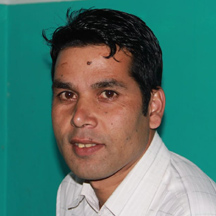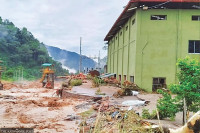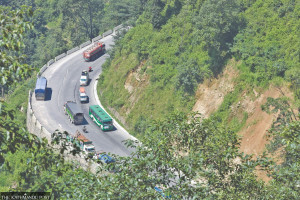Money
Nepal begins process to register five species of large cardamom grown in the country
Once the species of large cardamom, one of the most expensive spices in the world, are registered, Nepal can claim their ownership and patent them in the international market..jpg&w=900&height=601)
Ananda Gautam
Nearly two centuries since their cultivation began in the eastern hills districts of the country, the process of identifying and registering five species of large cardamom indigenous to Nepal has formally begun paving the way for claiming the rights of ownership and patenting them internationally.
According to Large Cardamom Development Center, Fikkal in Ilam, of the 14 different varieties of cardamom grown in Nepal, five varieties—Nepal Ramshai [grown at 1,500–2,000 meters above sea level], Golshai [1,200–1,600 metres], Dammershai [700–1,200 metres], Jirmale [600–1,200 metres] and Varlangae [1,500–2,000 metres]—are in the registration process.
Nepali large cardamom– also known as ‘black gold’ or ‘black cardamom’ and locally called alainchi – belongs to the botanical family called zengiberaceae and is one of the most expensive spices in the world. It is an evergreen, perennial and herbaceous plant grown on north-facing hill slopes, according to a government report.
In 1830 large cardamom was cultivated by farmers in four districts: Ilam, Taplejung, Panchthar and Bhojpur. It has been commercially grown only since 1853, when the Rana government took production and marketing initiatives.
Devendra Shah, plant conservation officer at the center, said the approval and registration sub-committee chaired by director general of the Department of Agriculture under the Ministry of Agriculture and Livestock Development will authenticate the varieties and also decide on the release of seeds of the different varieties before publication of the decision in the National Gazette. The sub-committee will recommend to another committee, chaired by the secretary of the Agriculture Ministry, the registration after conducting a detailed study.
“This initiative will help Nepal to promote its product in the international market,” Shah said.
So far, none of the varieties of large cardamom or black cardamom in the country have been identified and registered, he said.
Nepal is the world largest producer of large cardamom. Other countries where this spice is produced are India and Bhutan. In 2018-19, Nepal produced 7,954 tonnes of large cardamom while the average annual world production of large cardamom is around 12,000 tonnes.
Padam Adhikari, chief of the Large Cardamom Development Center, said the registration process is basically aimed at claiming the rights of ownership. “Once we have the patent rights, no one else can claim Nepali large cardamom as their product,” he said.
According to the center, the Nepal Ramshai variety has been cultivated in Nepal since 1850. The variety produces up to 31 kg per ropani (5,476 square feet). The variety is currently cultivated in 6,000 hectares. The production of Varlangae variety is up to 45 kg per ropani. This variety is now cultivated on 3,000 hectares of land.
Similarly, Golshai variety yields up to 35 kg per ropani. This has been planted in 59,000 hectares.
Dammershai variety yields up to 35 kg per ropani. It has been planted on 1,500 hectares.
Farmers sell the produce at Rs500 to Rs550 per kilogram while traders between Rs600 and Rs700.
The government’s report shows that large cardamom was commercially grown since 1853, when the Rana government took production and marketing initiatives such as: setting up of two large cardamom depots in Patna and Mirzapur of India, because of the concentration of Muslims, who traditionally use alainchi as an aromatic spice in their daily meal preparations and paan, for wholesale trade in Nepali large cardamom; keeping records of all large cardamom farmers; allocation of large cardamom farmland to farmers; provision of credit to farmers against the guarantee of local well-known persons; and establishing purchase and collection depots.
Similarly, the Rana regime also made the purchase guarantees for large cardamom from farmers; guarantee of payment within five days of purchase and introduced severe punishment for smugglers.
At a later stage the Mirzapur large cardamom depot was shut down while the one in Patna continued operation until 1890.
Following its closure there was a gap of 40 to 50 years in commercialisation of large cardamom in Nepal as a result of which Nepali farmers and traders suffered a lot financially during this period.
It was only between 1930 and 1940 that the farming of large cardamom in Nepal was revived by the initiatives of Indian Marwaris in Ilam district by setting up their purchasing depots in 1933, according to the report.
The Federation of Large Cardamom Entrepreneurs said that the large cardamom cultivation has been expanded in 41 districts of the country on 18,273 hectares.
According to the Trade and Export Promotion Center, the country exported large cardamom worth Rs3.81 billion in the first six months of the current fiscal year, an increase of 51.60 percent during the same period in the last fiscal year when the export stood at Rs2.51 billion.




 22.12°C Kathmandu
22.12°C Kathmandu














